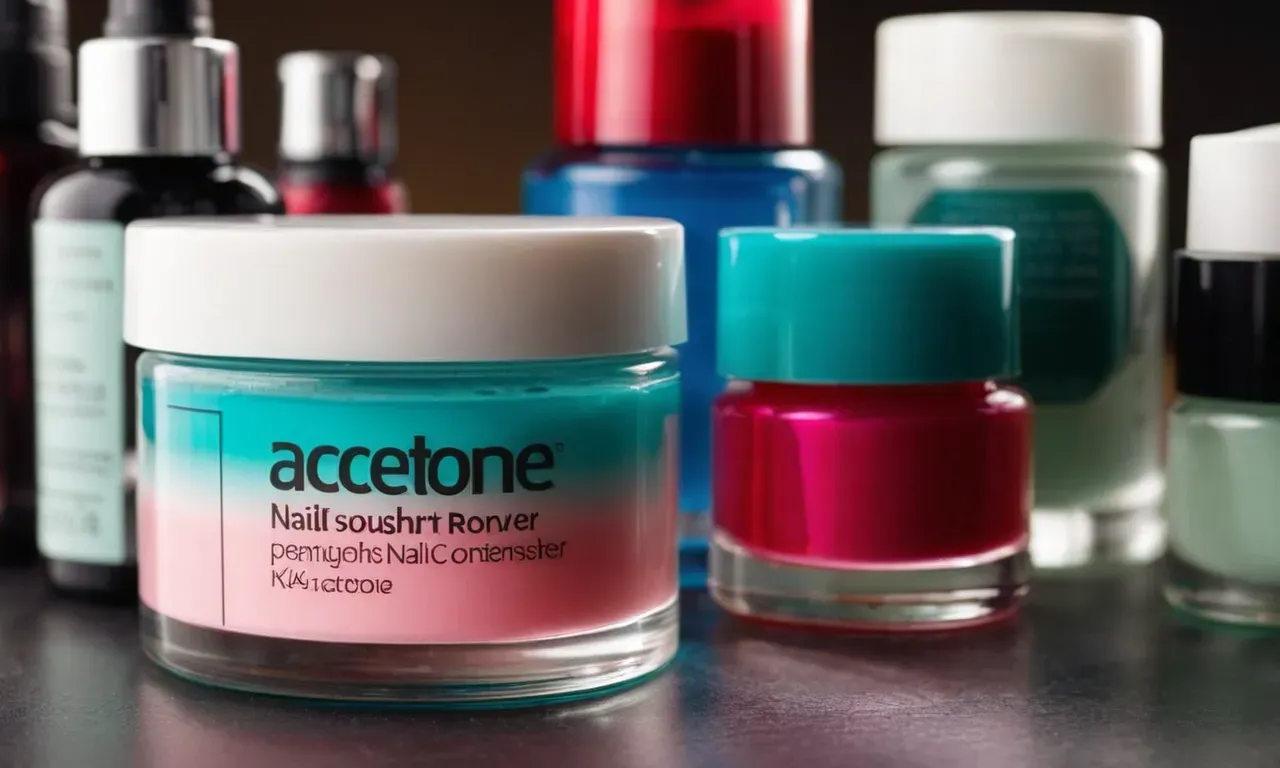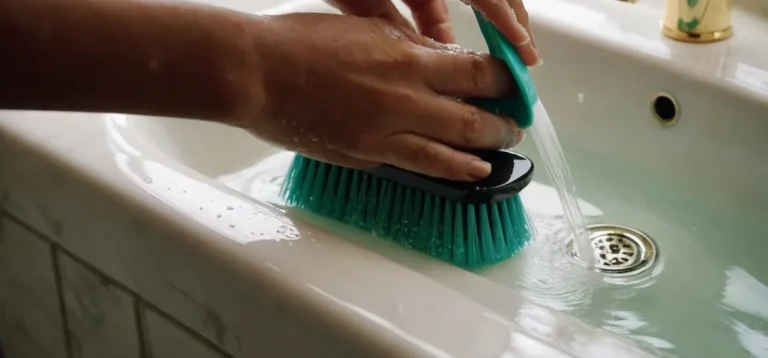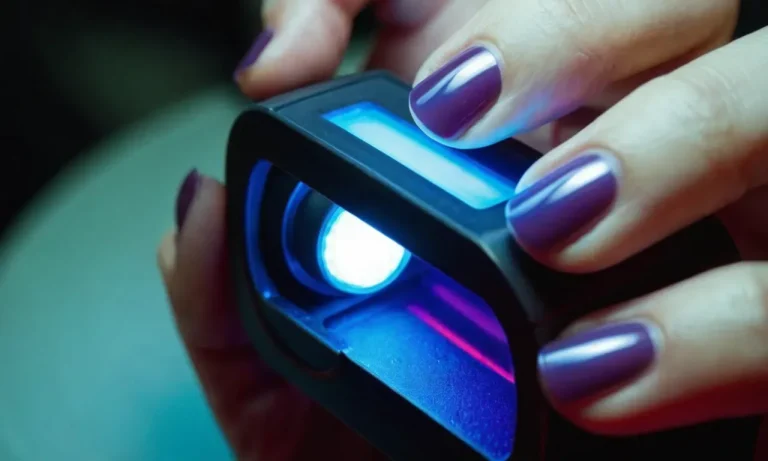How Much Acetone Is In Nail Polish Remover?
Nail polish remover is a staple in many households and salons for removing nail polish quickly and effectively. But what exactly is in nail polish remover that makes it work so well? The key ingredient is acetone, a harsh yet effective solvent and nail polish remover active ingredient that breaks down the nail polish polymers.
If you’ve ever wondered how much acetone is in nail polish remover, read on as we dive into the details.
If you’re short on time, here’s a quick answer to your question: Most nail polish removers contain 50-90% acetone, with average drugstore varieties containing about 75-80% acetone.
What is Acetone?
Acetone is a colorless liquid organic compound that is widely used as a powerful solvent. It is a flammable liquid that evaporates quickly at room temperature. Some key facts about acetone:
Colorless liquid organic compound
Chemically, acetone is known as propanone. Its chemical formula is C3H6O. It is an organic compound since it contains carbon atoms. Acetone has no color and is a transparent liquid at room temperature.
Powerful solvent
Acetone is an excellent solvent thanks to its polarity. It can dissolve many organic substances like fats, oils, waxes, resins, rubber, plastics, etc. This makes it useful as an ingredient in nail polish removers and paint thinners.
Evaporates quickly
Acetone is very volatile, meaning it easily evaporates at room temperature. Its boiling point is relatively low at 56°C (133°F). This property allows the acetone in nail polish remover to evaporate off your skin once it has dissolved the polish.
Dissolves nail polish
The ability of acetone to dissolve substances like paints and plastics is key to its use in removing nail polish. When applied to painted nails, acetone penetrates the layers of polish and causes them to dissolve so they can be wiped off.
Acetone Content in Nail Polish Removers
50-90% acetone
Most drugstore nail polish removers contain 50-90% acetone, which is a powerful solvent that breaks down nail polish and removes it from the nail plate. Acetone-based removers with 50-90% acetone content are effective at removing regular nail polishes quickly.
However, they can be harsh on the nails and cause dryness with frequent use. Using removers with lower acetone content can help minimize nail damage over time.
75-80% acetone average
The average acetone content in most affordable, mass-market nail polish removers is around 75-80%. This concentration offers a balance of being strong enough to remove polish quickly, while not being so harsh that it excessively dries out the nails and skin.
Most people can use a 75-80% acetone nail polish remover for regular polish removal without issues. However, those with sensitive skin may still find them overly drying used several times a week.
100% acetone professional strength
100% acetone removers are meant for professional use in salons and are extremely effective at removing polish quickly. However, they are very dehydrating and damaging to natural nails with repeated use.
Some DIYers also use pure acetone to remove tough glitters or gel manicures at home, but this should be done sparingly. For home use, it’s best to find the lowest acetone concentration that can effectively remove your polishes.
The average person doesn’t need stripping power of pure acetone for regular manicures.
Acetone-free alternatives
There are nail polish removers that contain no acetone at all and rely on other solvents like ethyl acetate to break down polish. These are gentler on the nails and cuticles. However, they may require more scrubbing to remove polish, especially glitters or long-wearing formulas.
Acetone-free removers are ideal for those with very dry and brittle nails who want to avoid excessive dehydration. Just be aware that removal may take longer. Some popular acetone-free brands include Ella+Mila, Piggy Paint, and Zoya.
How Acetone Works to Remove Nail Polish
Penetrates nail polish layer
Acetone is a small molecule that can easily penetrate through the layers of nail polish on your nails. The nail polish itself is made up of a film-forming polymer suspended in a solvent – usually ethyl acetate or butyl acetate.
When you apply nail polish, these solvents evaporate, leaving the polymers to form long chains and harden into a smooth, shiny film on your nails. Acetone is an effective solvent that can get between the chains of polymers and break up those interactions.
Dissolves bonding polymers
The main polymers in nail polish are nitrocellulose and plasticizers. Nitrocellulose molecules form long chains that wrap around each other, creating a tough, durable bond that sticks the polish tightly to your nails. Acetone breaks up those interactions by dissolving the nitrocellulose chains.
It also dissolves the plasticizers that make the polish flexible. With the polymers dissolved, the hardened polish liquefies again so it can be wiped off.
Allows easy removal with cotton pad
Once acetone has broken down the nail polish polymers, the liquefied polish can be easily swiped away. Acetone-based nail polish removers are applied with a cotton pad, cotton ball, or nail polish removal wipe.
The cotton helps soak up and absorb the dissolved nail polish, allowing you to sweep it off without scraping at your nails. Acetone removes even dark, stubborn glitter or gel polish with a couple gentle swipes.
Quick evaporation
One of the benefits of acetone is that it evaporates very quickly. This means that while it effectively breaks down nail polish polymers, it doesn’t linger very long on your skin. Within a minute or two, the acetone dissipates into the air through evaporation and your nails are left clean and dry.
This quick drying effect makes acetone ideal in nail polish removers compared to other solvents like ethyl acetate.
Considerations When Using High Acetone Products
Can dry out nails and skin
Nail polish removers with high concentrations of acetone, usually over 90%, can be quite drying and damaging to the nails and surrounding skin. Acetone is an extremely potent solvent that doesn’t just dissolve nail polish, but also the oils in the nail plate and cuticles that keep them hydrated and flexible.
Frequent use of pure acetone removers can cause nails to become dry and brittle, leading to peeling, cracking and breakage. The skin around the nails also suffers, potentially becoming red, flaky and irritated.
This drying effect seems to be exacerbated by the rubbing action used when removing glitter polishes or dark colors, which require more scrubbing.
Use cuticle oil after
To combat the drying effects, it’s highly recommended to apply a nourishing cuticle oil after using an acetone-based remover. The oil replenishes vital moisture and lipids lost in the removal process. Look for formulas containing hydrating ingredients like vitamin E, coconut oil, shea butter or jojoba oil.
Gently massage a few drops into the nails and cuticles. Doing this helps restore suppleness and sheen to prevent long-term damage.
Store tightly sealed
Because acetone evaporates quickly, it’s crucial to always keep the nail polish remover bottle tightly closed when not in use. Exposure to air causes acetone concentrations to decrease rapidly over time, rendering the product ineffective for removing polish.
An ineffective remover leads to prolonged, rigorous rubbing that exacerbates nail and skin dryness.
Store remover in a cool, dark place and discard if it smells odd or seems thickened. Pay attention as well to any separated oil floating on top, which indicates evaporative depletion of acetone. For optimal performance, replace acetone-based removers every six months.
Use in well-ventilated area
Working in an environment with ample fresh airflow is vital when using acetone nail polish removers. Acetone vapors are quite strong and can be overpowering in an enclosed space. Always use remover at a table or vanity near an opened window or door. Turn on any exhaust fans in the room as well.
Breathing too much acetone vapor has been associated with headaches, nausea, and eye/nose/throat irritation. It can also exacerbate asthma symptoms in sensitive people. Pregnant women should take extra precaution due to possible acetone inhalation risks to fetal development.
Acetone-Free Alternatives
Acetone has traditionally been the go-to solvent for removing nail polish, but some people are seeking out acetone-free options due to the harsh effects acetone can have on nails and skin. Here are some of the key things to know about acetone-free nail polish removers:
Contain milder solvents
Instead of acetone, acetone-free removers use milder solvents like ethyl acetate, methyl acetate, or propyl acetate. These solvents are still able to break down nail lacquer, just at a slower pace than acetone. The upside is they are less drying to the nail and cuticle.
Take longer to work
The gentler acetone-free solvents require a little more patience and elbow grease to remove polish. It may take 10-15 minutes of soaking cotton pads on the nails compared to acetone’s quick 1-2 minutes. Some people don’t mind the extra time for a more moisturizing experience.
Less drying to nails
Acetone is extremely effective at breaking nail polish bonds, but it also breaks down nail protein and natural oils in the process. This leads to dry, brittle nails over time. The milder solvents in acetone-free removers are less dehydrating and help retain more moisture and flexibility in the nails.
Options include ethyl acetate, methyl acetate
Popular acetone-free removers use solvents like:
- Ethyl acetate – Derived from ethanol, this fast-evaporating solvent can remove polish in 5-10 minutes.
- Methyl acetate – Made from methanol, this dissolves nail lacquer slower than ethyl acetate.
- Propyl acetate – An ester solvent that is gentler than ethyl/methyl acetate.
No matter the solvent, acetone-free formulas aim to efficiently remove polish while keeping nails in better condition than acetone. They provide a viable option for those looking to reduce dryness and brittleness from frequent manicures.
Conclusion
So in summary, most nail polish removers contain high concentrations of acetone ranging from 50-90%, with average drugstore varieties containing 75-80% acetone. Acetone works by dissolving the nail polish polymers, allowing fast and effective polish removal.
However, the high acetone content can dry out nails and skin over time. Acetone-free alternatives are available for a gentler option, though removal takes longer. Now that you know how much acetone is in standard nail polish remover, you can make an informed choice about the best remover for your nails.







